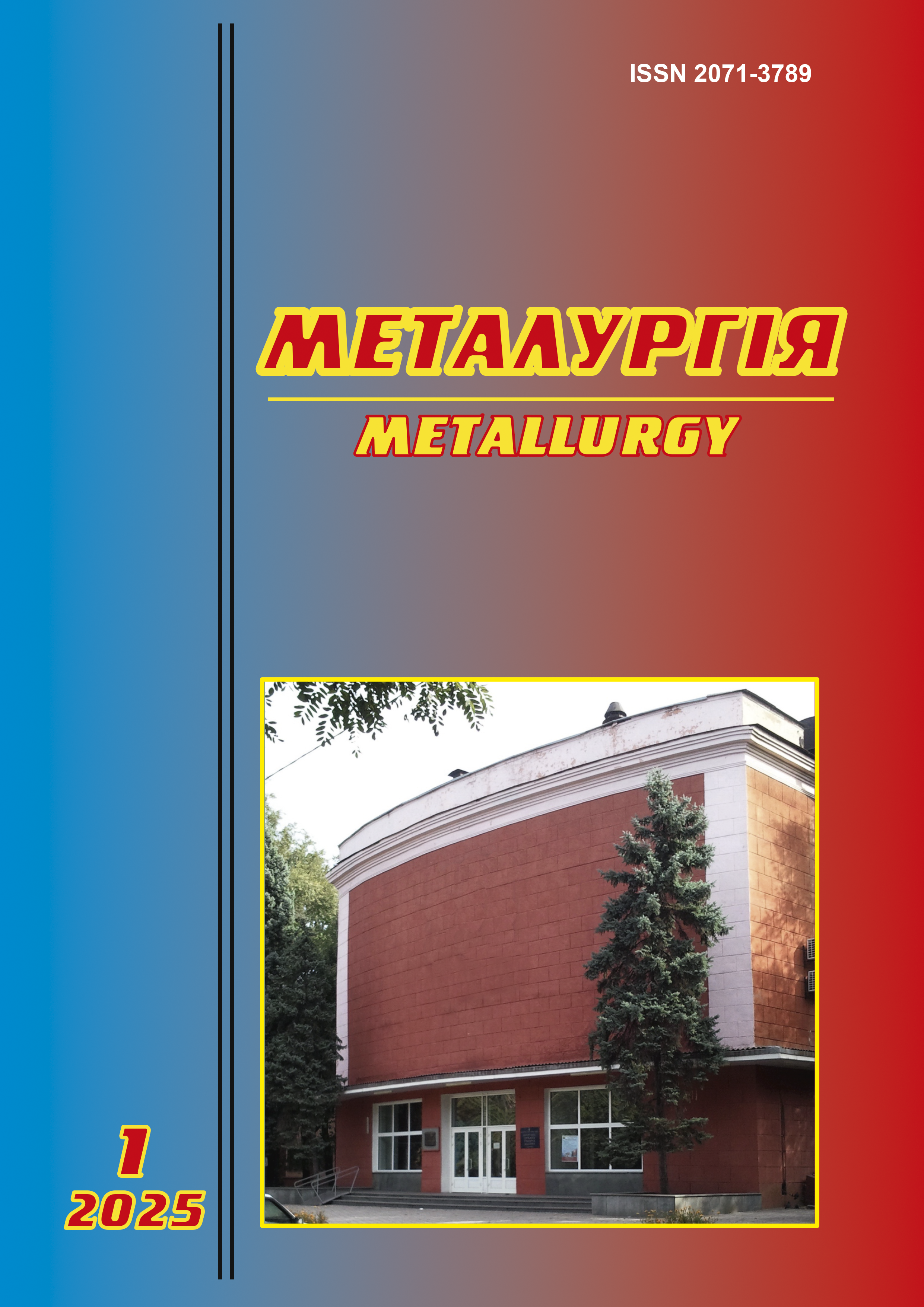ОТРИМАННЯ ТИТАН-МОЛІБДЕНОВИХ СФЕРИЧНИХ ПОРОШКІВ МЕТОДОМ PREP З ВИКОРИСТАННЯМ КАТОДІВ, ВИГОТОВЛЕНИХ БЕЗКАМЕРНОЮ ЕЛЕКТРОШЛАКОВОЮ ВИПЛАВКОЮ
Abstract
The rapid development of 3D-printing technologies justifies the relevance of the production of powders by the PREP method. Confirmation of this is active participation in scientific research of innovative materials, development of technologies, equipment of professional institutions of Ukraine, Europe, China and America. Titanium and titanium alloy powders are in wide demand as heat-resistant, heat-resistant and corrosion-resistant materials. It is known that doping titanium with molybdenum from 3 % to 10 % increases its corrosion duration in solutions of inorganic acids from 20 to 300 times, which makes this two-component alloy a promising material for obtaining highly corrosion-resistant powders. The work provides evidence of the high biocompatibility of two-component titanium-molybdenum alloys. For the production of a wide range of medical parts, it is most advisable to use layer-by-layer synthesis with two-component powder. Titanium-molybdenum cathodes were made from ingots with a diameter of 55 mm, which were obtained using the technology of chamberless electroslag smelting. The consumable electrodes were made of titanium and molybdenum strips, which were connected into a package using the TiG method. The titanium-molybdenum ingot had a smooth surface, a dense defect-free macrostructure; no inclusions of unmelted molybdenum particles were detected. It was established that the hardness of the casting and the content of molybdenum and titanium in the cross section almost did not change. Center – 33.0…33.2 HRC, Ti – 91.15 %, Mo – 8.83 %; half of the radius – 33.0…33.5 HRC, Ti – 91.6 %, Mo – 8.84 %; edge – 33.5…34.0 HRC, Ti – 91.10 %, Mo – 8.90%. The sprayed powder had the following chemical composition: Ti – base, 8.700% Mo; 0.180% Fe; 0.050% C; 0.030% Si; 0.035% N; 0.150% O; 0.009% H, particle shape – spherical, bulk density 1.9…2.2 g/cm3 and fractional composition: 40…50 μm – 7%; 50…60 μm – 15%; 60…70 μm – 23%; 70…80 μm – 28%; 80…90 μm – 17%; 90…100 μm – 7%. In general, the powder meets the quality criteria of additive powders.
References
2. Isonishi К., Kobayashi М., Tokizane М. Production of Ti-6Al-4V alloy powders by plasma rotating electrode process // Tetsu-to-Hagan. 1989. Vol. 75(10). P. 1913–1920.
3. Офіційний сайт ТОВ «МУЛЬТІФЛЕКС». URL: https://surl.lu/bjophw. (дата звернення: 30.06.2025).
4. Laboratory of powder and special metallurgy. URL: https://ussi.zp.ua/poroshkovoy-metal/. (дата звернення: 30.06.2025).
5. Корозія. Методи захисту выд корозії [електронный ресурс] // – ООО «Спецтехніка- Украіна. – Режим доступа: www.spt-ukr.com/library/5/page36 -].
6. Погрелюк І.М., Білоник Д.І., Лаврись С.М., Білоник І.М., Проскурняк Р. В., Капустян О.Є. Підвищення корозійної тривкості титану вторинного виготовлення легуванням молібденом // Фізико-хімічна механіка матеріалів. 2025. Т. 61, № 1. С. 103–108. URL: http://jnas.nbuv.gov.ua/article/UJRN-0001556647.
7. Xian W.H., Li D.G., Chen D.R. Investigation on ultrasonic cavitation erosion of TiMo and TiNb alloys in sulfuric acid solution // Ultrasonics Sonochemistry. 2020. Vol. 62. P. 104877. DOI: 10.1016/j.ultsonch.2019.104877.
8 Forna N., Cimpoeşu N., Agop M., Iordache C., Forna D., Mocanu C. Thermal properties of two titanium alloy dental implants – linear behaviour and calorimetric analysis // 2011 E-Health and Bioengineering Conference (EHB). Iasi, Romania, 2011. P. 1–4.
9. Chen Y.Y., Xu L.J., Liu Z.G., Kong F.T., Chen Z.Y. Microstructures and properties of titanium alloys Ti-Mo for dental use // Transactions of Nonferrous Metals Society of China. 2006. Vol. 16. P. s824–s828. DOI: 10.1016/S1003-6326(06)60308-7.
10. Dzogbewu T.C., de Beer D.J., du Preez W.B. Laser powder bed fusion of Ti15Mo fused tracks and layers // JOM. 2023. Vol. 75. P. 3183–3196. DOI: 10.1007/s11837-023-05842-2.
11. Dzogbewu T.C., du Preez W.B. In situ alloying of Ti10Mo fused tracks and layers via laser powder bed fusion // Manufacturing Review. 2022. Vol. 9. DOI: 10.1051/mfreview/2022022.
12. Добаткин В. И., Аношкин Н. Ф., Андреев А. Л. Слитки титановых сплавов. Металлургия, 1966. 286 с.
13. Применение титана в народном хозяйстве / под ред. А. И. Туманова. Киев: Техника, 1975. 200 с.
14. Гуревич С.М. Справочник по сварке цветных металлов. Киев: Наукова думка, 1990. 512 с.
15. ДСТУ 2640-94. Порошки металеві. Визначення розміру частинок сухим просіюванням (ISO 4497:1983, ГОСТ 18318-94, NEQ; IDT). [На заміну ГОСТ 18318-73; чинний від 1996-01-01]. Вид. офіц. Київ : ДП «УкрНДНЦ», 1994.
16. Хайрулаев М.Р., Дадаев Д.Х. Контактное плавление в простых системах: монография. Махачкала: Махачкала, 2013. 196 с.

 ISSN
ISSN 


